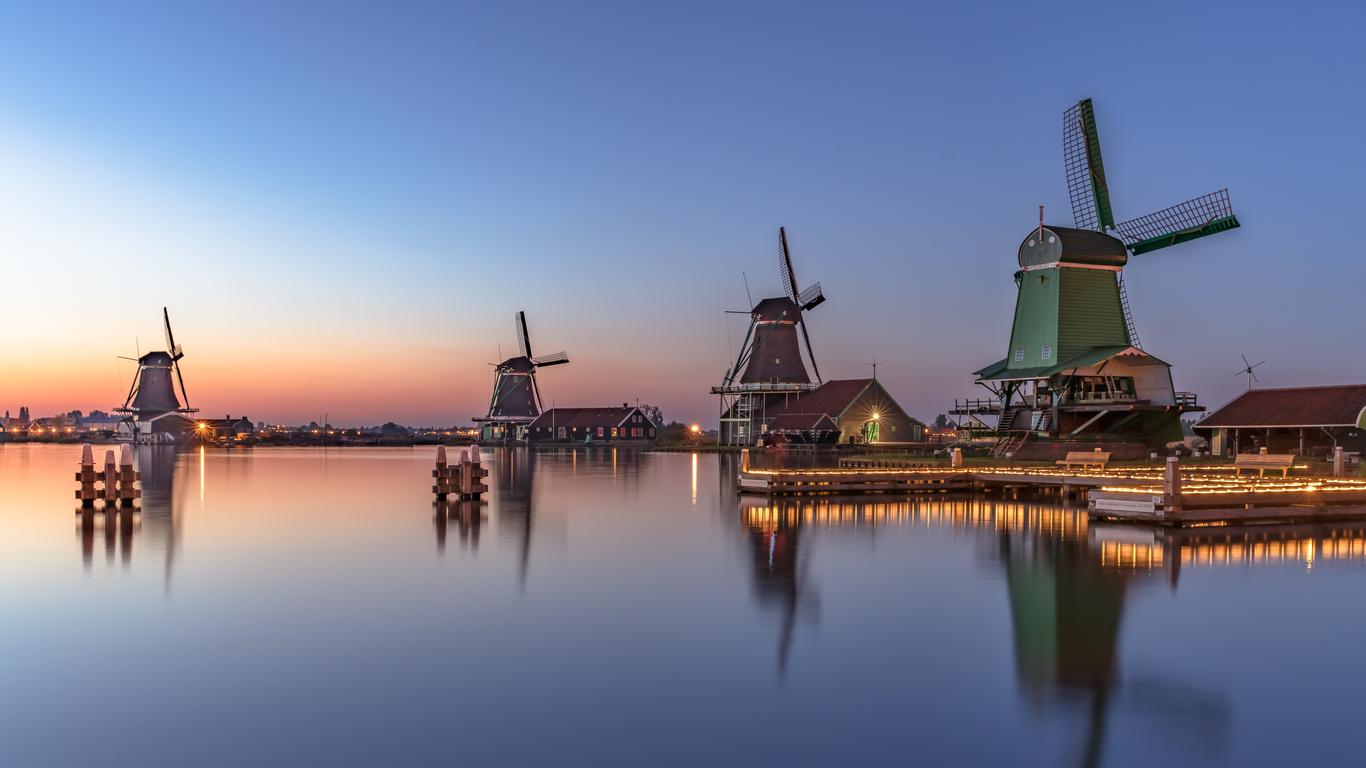Sprawling along the Zaan River in North Holland, the city of Zaandam brings together a number of small towns and villages with a rich Middle Ages industrial heritage. Its waterfront is lined with lively cafes and bars, while museums preserving their industrial roots and honouring some of its most famous residents make it a worthy destination.
Traditional wooden houses and historic windmills built in the 17th century to serve the burgeoning city of Amsterdam are scattered throughout the region and clustered within the Zaanse Schans open-air museum, a designated stop on the European Route of Industrial Heritage. It was the milling of Scandinavian wood for the shipbuilding and paper industries that was the region’s biggest economic industry, remembered in “The Woodworker” statue. While the importance of Zaandam declined during the 18th century, it again prospered in the late 19th and early 20th centuries as the centre of the country’s food industry, playing a significant role as a lumber and whaling port. While the city of Zaandam has largely been transformed today, just a short walk across the Zaanriver lies Zaandijk which has retained much of its old village charm.
Zaandam is easily accessed by rail from Amsterdam Central Station, located just two stops away, and with direct links to cities in both the north and south of the Netherlands. There’s also regular bus services from Amsterdam throughout the year and, during the summer months, a ferry runs between the two cities on weekends. For those exploring the various towns that make up Zaandam, cycling is an ideal way to get around.
In the late 17th century, Czar Peter 1 of Russia studied shipbuilding in Zaandam, with the house where he once stayed now preserved as a museum and one of the oldest wooden houses in the Netherlands. Impressionist painter Claude Monet also spent a few months living and working in Zaandam during 1871, and his former residence, known as Monet’s Blue House, has been left as he painted it.





